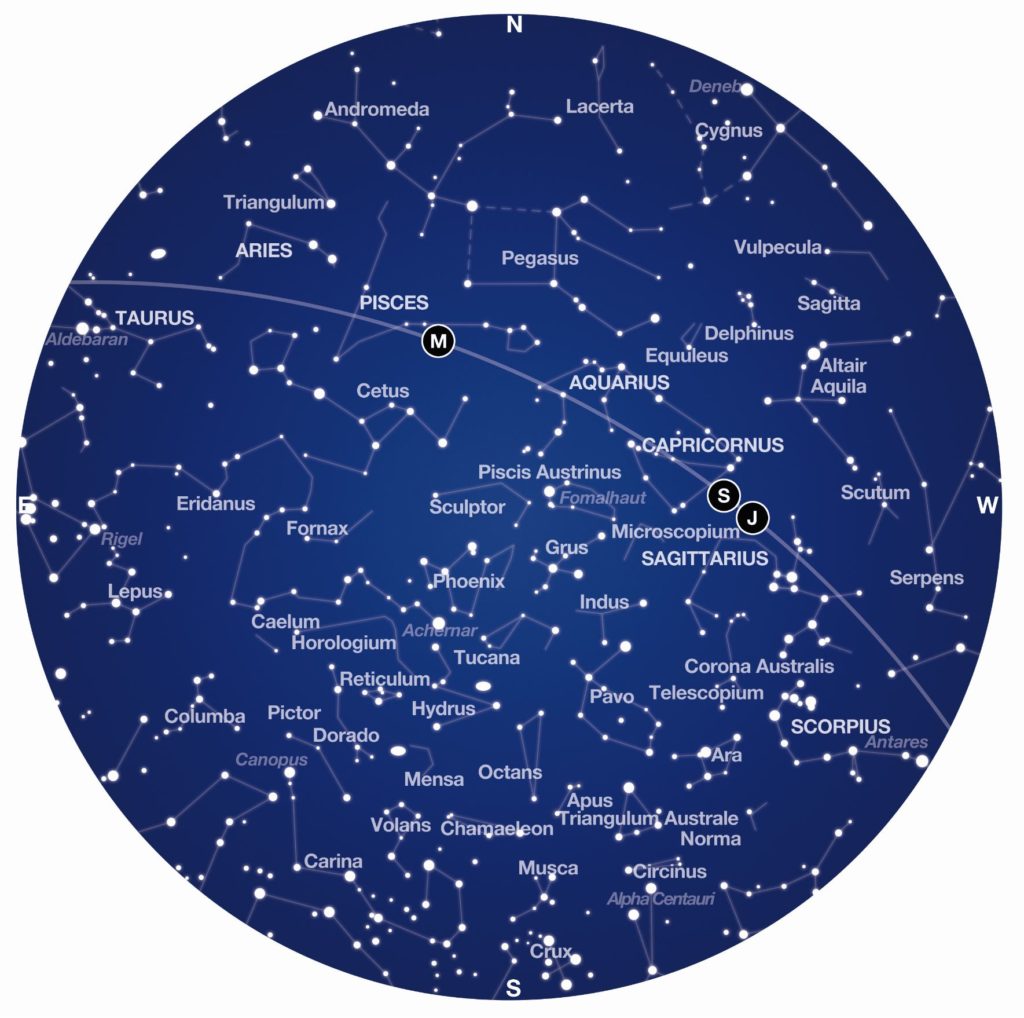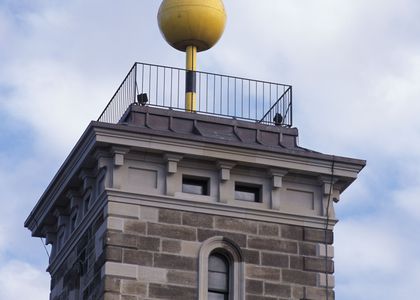
What’s in the sky this November?
Constellations
Constellations are groups of stars that form a picture. These pictures were given names and for millennia have been used as a tool for navigation and to share significant cultural stories. Astronomers use these constellations to delineate portions of the sky and as a way for locating astronomical objects. In November the following constellations dominate the spring sky:
- Pegasus – the winged horse is high in the northern sky. Pegasus is easy to find, with the best-known feature of this constellation the ‘Great Square of Pegasus’. The Square is large at over 15 degrees in width and 13 degrees in height however, there are few bright stars within the Square making it easy to locate. Four stars outline the Square and in the past all four were a part of the constellation, however delta Pegasi is now known as Alpha Andromedae.
- Andromeda – low in the northern sky beneath Pegasus. While best seen in the northern hemisphere, a clear view to the north horizon allows southern observers to explore this constellation.
- Aquarius – high overhead in the November sky. An ancient constellation, Aquarius is best known for the Eta-Aquarids meteor shower that peaks in early May. Like the other constellations, Aquarius is steeped in mythology, seen as Ganymede, a shepherd boy in Greek mythology and as a man pouring water from a jug by the Babylonians.
- Cetus – high in the eastern sky and one of the most ancient and the fourth largest constellation in our sky. Cetus is depicted as a variety of creatures, including a sea monster and a whale. It is found in the sky beside Eridanus, the river.
- Eridanus – stretching high across the southern evening sky. Eridanus represents a river with the beginning near the constellation of Orion and the end of the river marked by the brilliant Achernar, a blue-white star shining at magnitude 0.5.
Planets
Mars, Jupiter and Saturn are in the evening sky with Venus in the early morning sky this month.
- Venus – is low in the eastern sky and moves from the constellation Virgo to Libra at the end of the month.
- Mars – the red planet is high in the evening sky in the constellation of Pisces.
- Jupiter – the largest planet in our Solar System, is high in the western sky after sunset in the constellation Sagittarius. It is below Saturn.
- Saturn – the ringed planet is high in the western sky after sunset in the constellation Sagittarius.
Moon
For the monthly movements of the Moon, check out our Moon Phase Calendar.
Deep Sky
Explore the universe through binoculars or a telescope and take in these gems of the November sky:
- LMC/SMC – The Large and Small Magellanic Clouds are the two satellite galaxies of our own Milky Way. The Large Magellanic Cloud (LMC) is in the constellation of Dorado and is about 160,000 light years away, while the Small Magellanic Cloud (SMC) is in Tucana and is about 200,000 light years away.
- 47 Tuc or 47 Tucana – is one of the finest globular clusters in the sky, second only to Omega Centauri. It sits beside the SMC in the constellation Tucana and can be seen with the unaided eye away from city lights. 47 Tuc is approximately 15,000 light years from us.
- Tarantula Nebula (NGC 2070) – a large hydrogen gas cloud approximately 1,000 light years in diameter in the LMC. The name ‘Tarantula’ comes from the spider-like appearance of the nebula in telescopes and photographs. At the centre of the nebula is the open cluster R136, which contains approximately 500,000 stars that are some of the hottest and most massive supergiant stars known.
- M15 (Messier 15) – the first globular cluster found to contain a planetary nebula is located in the constellation Pegasus. A rare intermediate black hole also resides at the centre of M15 and is thought to be 4,000 times the mass of our Sun. M15 lies about 33,600 light years from us and is best seen through binoculars or a telescope.
- NGC 6752 (New General Catalogue 6752) – is a bright (magnitude 6) globular cluster located in the constellation Pavo. Containing over 100,000 stars it is about 15,000 light years away.
- NGC 7009 (Saturn Nebula) – a planetary nebula in Aquarius approximately 3,000 light years away. It is known as the Saturn Nebula due to its shape (resembling the planet Saturn) and at magnitude 8, it appears as a bluish ellipse in telescopes.
- M2 – is a globular cluster in Aquarius approximately 37,000 light years away. It contains over 150,000 stars and has a diameter of over 150 light years making it one of the largest known globular clusters. At magnitude 6.3, M2 can be easily seen in binoculars or a telescope.
- M31 – the Andromeda Galaxy is the most distant object visible to the unaided eye and is about 2.5 million light years away. While a fascinating sight with just your eyes, if you have binoculars or a small telescope then you will see the dark dust lanes of the spiral arms, a bright core, and if you are lucky you might pick up one or both of its companion galaxies.
Learn More
- Purchase the 2021 Australasian Sky Guide by Dr Nick Lomb, featuring an annual report of what’s in the sky and the latest astronomical findings. Produced by MAAS Media.
- View the November Sky Chart, which shows the stars, constellations and planets visible in the night sky from anywhere in Australia
- Watch our 28 November Southern Sky Livestream with Dr Devika Kamath on Sydney Observatory’s Facebook


